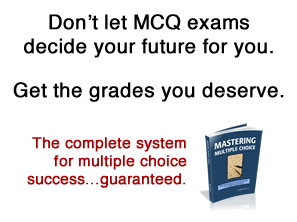Acing might be a stretch, but this article suggest there really are tricks that work.
In an effort to test the whether there was any merit to multiple choice test-taking strategies, author William Poundstone crunched the data on a sample of 100 multiple choice tests, 34 from schools and colleges and 66 from other sources. All told, he looked at a total of 2,456 questions. You can read the excerpt from his book in the article, but here are a few of his interesting findings:
Tips for True False Test Questions
- “True” answers are more common than “false” ones. The average split was 56% true and 44% false.
- The chance that the next answer will be different from the present one is 63%. That’s more than the expected 50% for a random sequence.
As a result, Poundstone suggests:
- Go through the entire test, marking the answers you know, before attempting to make any guesses.
- Look at the known correct answers of the items before and after the one(s) that’s left you stumped. When both neighbouring answers are the same (both false, let’s say), guess the opposite (true).
- Should the before and after answers be different, guess true (because true answers are more likely overall).
Tips for Multiple Choice Test Questions
- In my total sample, a none/all answer was correct 52% of the time that there was such an answer.
- On tests with three choices (call them A, B, and C), the options were about equally likely to be correct.
- With four options, the second answer (B) was slightly favoured, being correct about 28% of the time. That’s compared to the expected 25% for four answers.
- With five options, the last answer (E) was the most commonly correct one (23%). The middle choice (C) was the least favoured (17%).
That suggests you should pick the second answer (B) on four-choice tests and the fifth answer (E) on five-choice tests.
All told, his study supports what many of us have known all along: there’s more to test-taking than studying the content. You need to work the test format too.
